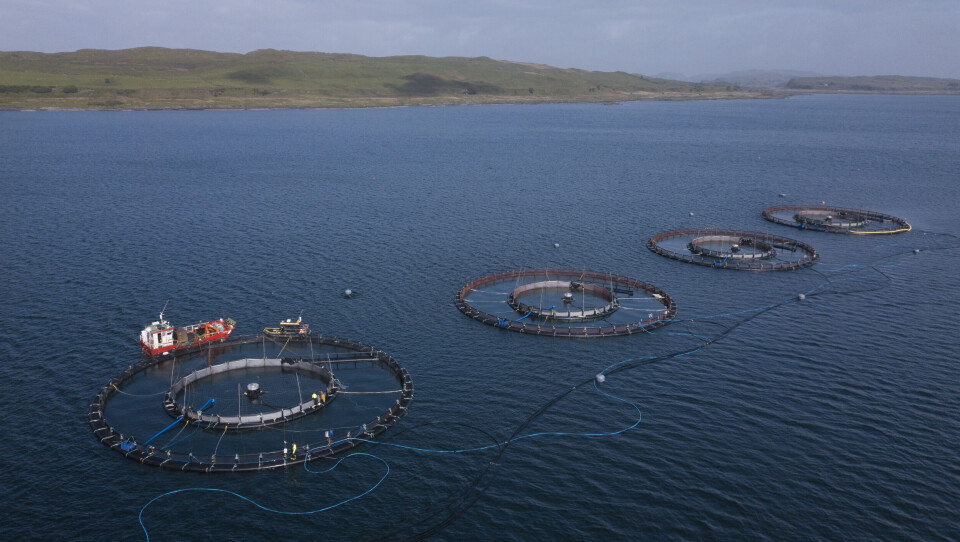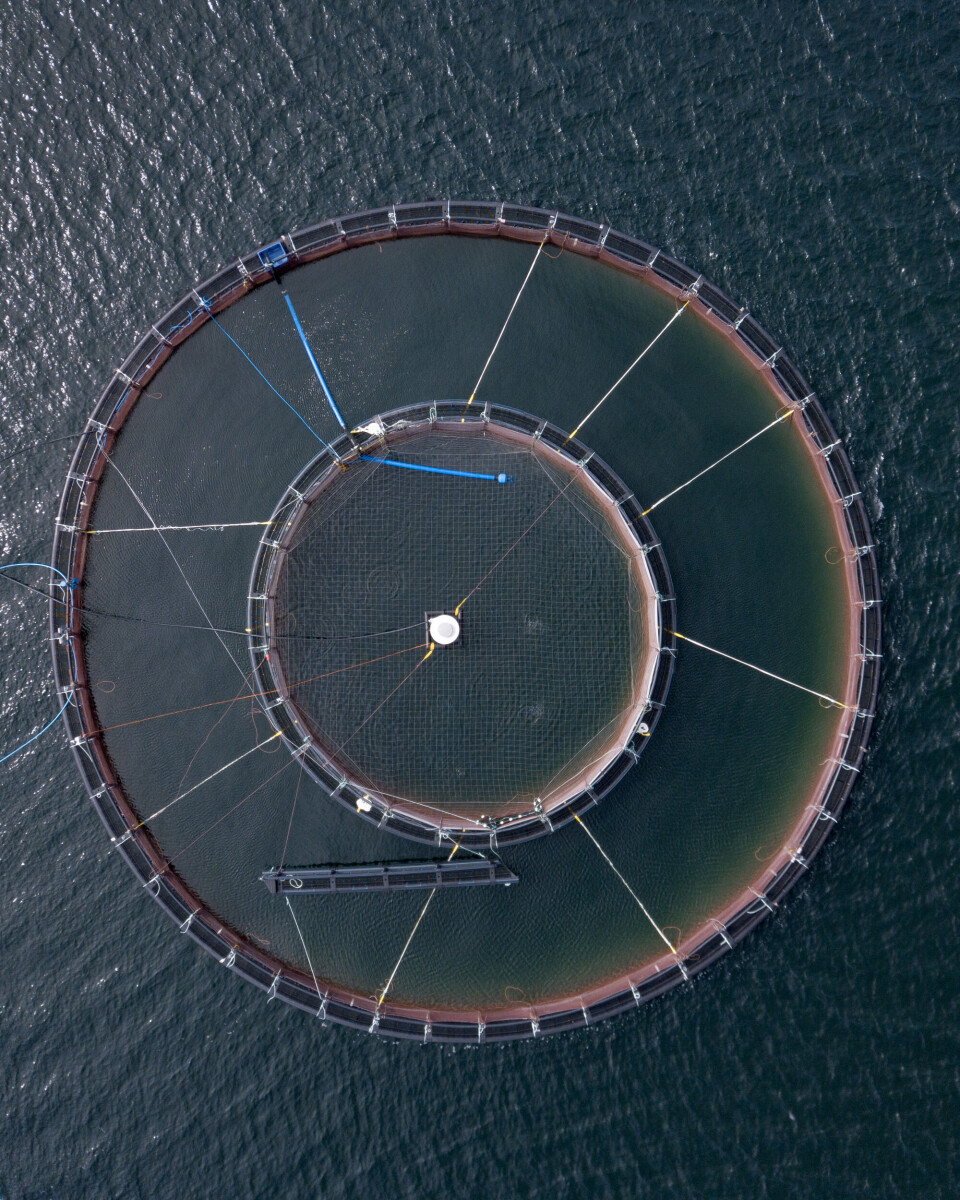
Mowi dives deep to beat lice problem
Mowi Scotland and aquaculture supplier AKVA group Scotland have given details of a commercial validation trial of AKVA’s Tubenet that recently began at the salmon farmer’s Port na Cro farm, Argyll and Bute.
Mowi is the first fish farmer in Scotland to trial the Tubenet, a type of snorkel cage that works by keeping fish below the lice layer, the top 10 metres of the water layer where the sea lice that parasitise salmon are generally found. Four Tubenet cages are being used.
The project is part of a commercial-scale validation in Scotland and Norway that follows successful trials carried out at Mowi’s research centre in Norway.
Subsurface feeding
AKVA’s Tubenet system uses a net to keep salmon below the lice layer and a large cylindrical, tarpaulin-walled passageway – the “snorkel” – in the centre of the cage which protects salmon from lice infestations when they swim to the surface to fill their swim bladders.
Feed is delivered by way of subsurface feeding tubes, and cleaner fish welfare is safeguarded by using hides specifically tailored for Tubenets.

In the case of Port na Cro, the tarpaulin “tube” extends to a depth of 14 metres and the feeders are placed at 13m. The inner cylinder is 60m in circumference.
Proactive approach
Port na Cro farm manager Gareth Siney said: “We are really excited to be the first farm to implement the Tubenet.
“At the moment, we use lots of different tools to tackle sea lice. But this technique is the first that is proactive by essentially trying to avoid sea lice being present in the water in the first place.”
The Tubenet cages were installed at Port na Cro in May and Siney and his team will provide regular reports and data to the other teams in Norway.
The project will conclude when the salmon are harvested, but expectations are high given research already conducted by the Norwegian Institute of Marine Research (IMR), which found that the system gave as much as 80% reductions in sea lice infestation over time.

Joint research
David Peach, general manager at AKVA group Scotland, said: “AKVA group is proud to be working closely with Mowi both here in Scotland and in Norway.
“This innovation, using AKVA group’s patented technology, is aimed at improving fish welfare and has been delivered from our Kishorn, Wester Ross build site after several years of significant joint research and development in Norway.
“We will continue to work closely with Mowi and in particular Gareth and the team at Port na Cro throughout the duration of this exciting validation project which is a world first in the aquaculture industry.”
NOK 100m deal
News of the trial was first released last month when AKVA announced that it had agreed a NOK 100 million (£7.7m) deal to deliver its Tubenet system to seven Mowi sites in Norway, and had also agreed the Scottish trial.
“We hope the Tubenet provides another effective tool for our successful management of sea lice, complementing our other strategies that now include mechanical removal and cleaner fish,” said Mowi Scotland deputy production director Sean Anderson at the time.
“Mowi are the first to deploy the Tubenet in Scotland and if it is a success we will look to convert more sites.”
A video of the cages in place at Port na Cro can be seen here.























































